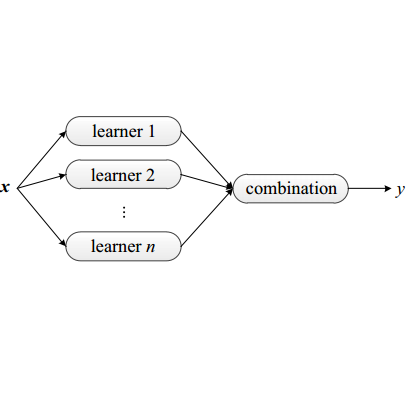Background: The 2019 novel coronavirus disease (COVID-19) has been spread widely in the world, causing a huge threat to people's living environment. Objective: Under computed tomography (CT) imaging, the structure features of COVID-19 lesions are complicated and varied greatly in different cases. To accurately locate COVID-19 lesions and assist doctors to make the best diagnosis and treatment plan, a deep-supervised ensemble learning network is presented for COVID-19 lesion segmentation in CT images. Methods: Considering the fact that a large number of COVID-19 CT images and the corresponding lesion annotations are difficult to obtained, a transfer learning strategy is employed to make up for the shortcoming and alleviate the overfitting problem. Based on the reality that traditional single deep learning framework is difficult to extract COVID-19 lesion features effectively, which may cause some lesions to be undetected. To overcome the problem, a deep-supervised ensemble learning network is presented to combine with local and global features for COVID-19 lesion segmentation. Results: The performance of the proposed method was validated in experiments with a publicly available dataset. Compared with manual annotations, the proposed method acquired a high intersection over union (IoU) of 0.7279. Conclusion: A deep-supervised ensemble learning network was presented for coronavirus pneumonia lesion segmentation in CT images. The effectiveness of the proposed method was verified by visual inspection and quantitative evaluation. Experimental results shown that the proposed mehtod has a perfect performance in COVID-19 lesion segmentation.
翻译:目标:在计算断层成像(CT)成像中,COVID-19损伤的结构特征十分复杂,在不同的情况下差异很大。为了准确地定位COVID-19损伤并协助医生作出最佳诊断和治疗计划,为CCT图像中的COVID-19损害分解提供了一个深为监督的混合学习网络。方法:考虑到大量COVID-19 CCT图像和相应的视觉图解难以获得,采用了转移学习战略来弥补短路并缓解不适应的问题。基于以下事实:传统的单一深度学习框架难以有效提取COVID-19损害特征,这可能导致某些损害不被发现。为了克服这一问题,提出了深度监控的混合学习网络,以与COVID-19 CLIV-19的当地和全球特征相结合,提出了深度的直观图解析图。结果:在目前进行的对数字分析中,提出了一种可使用的方法,即对正在通过高比值进行的数据分析。



